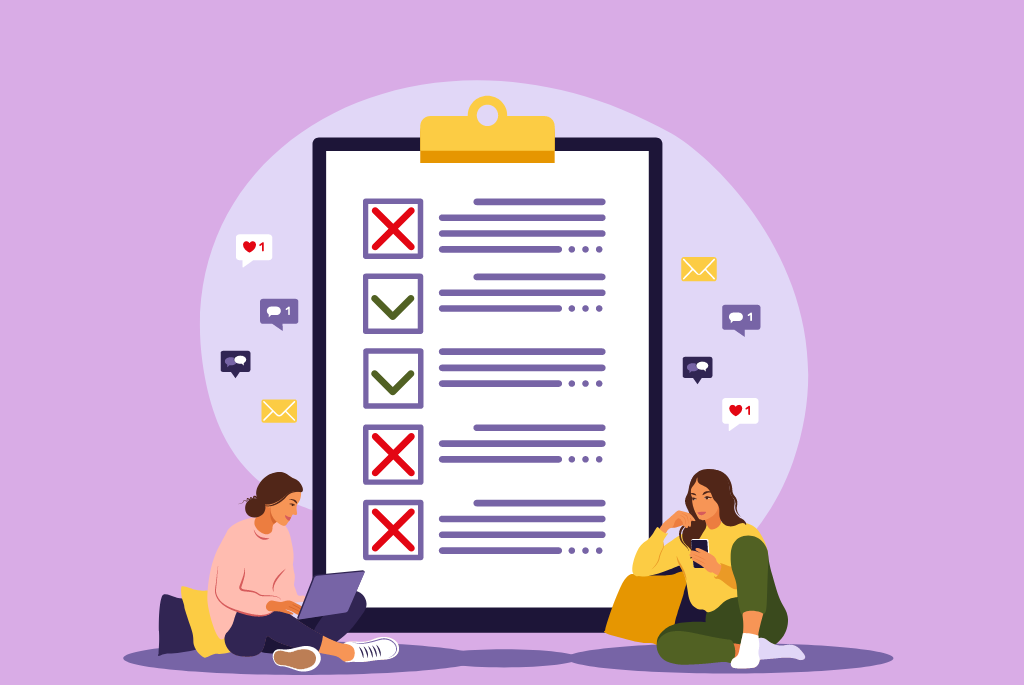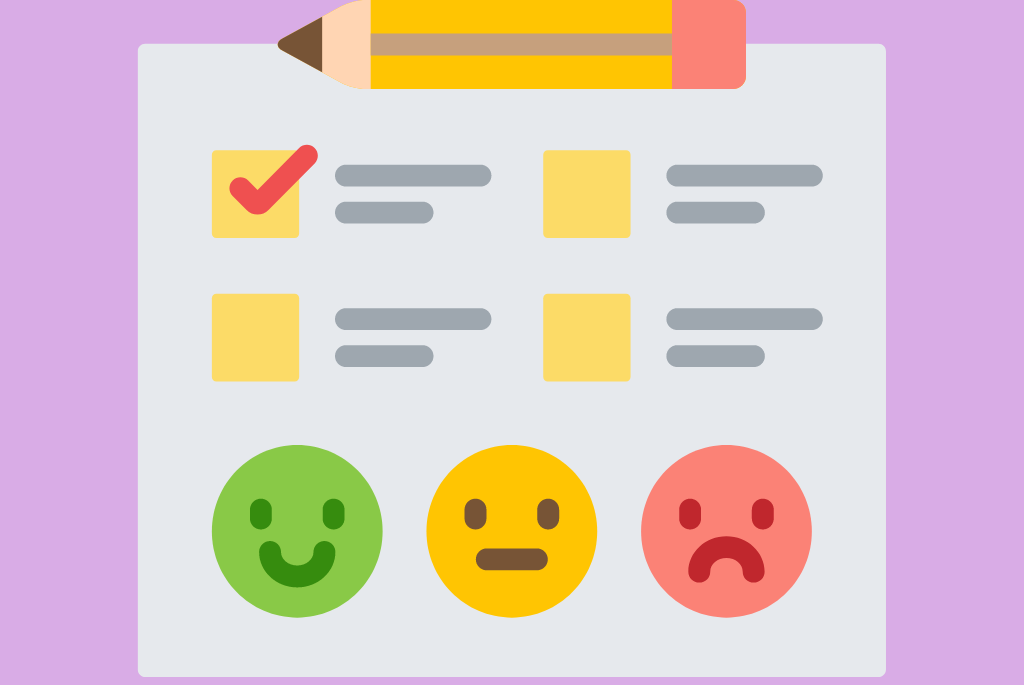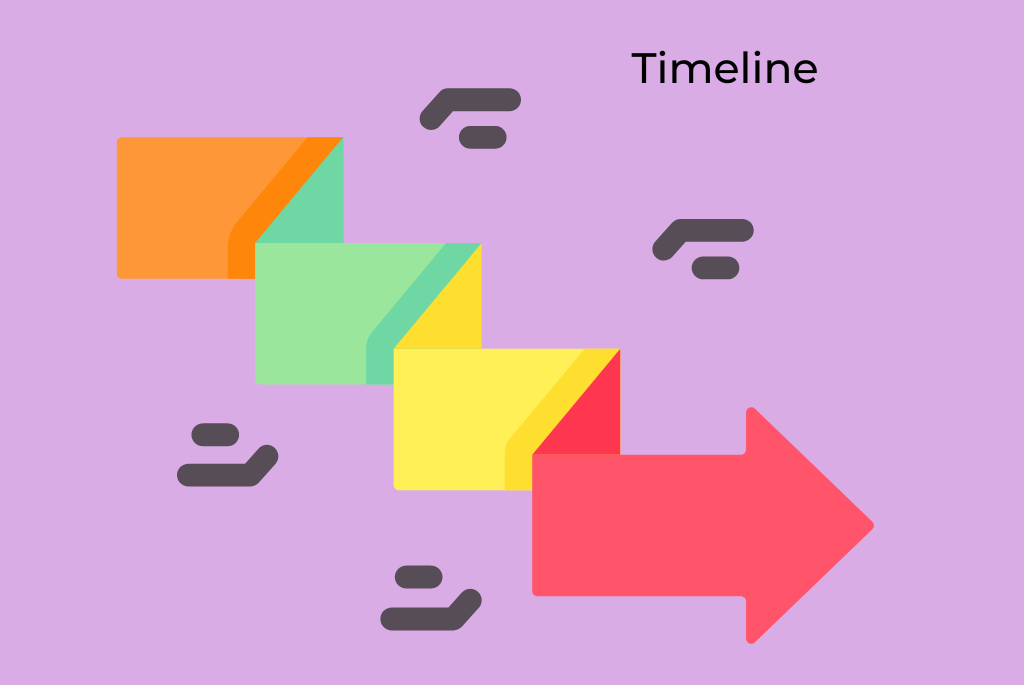Introduction
Customer satisfaction is a critical metric to track when evaluating the success of your business. According to a new Oracle survey, 77 percent of people who purchase your product or service will become loyal customers if your business makes them feel important and appreciated.
But how do you learn their thoughts and feelings about your business? Through customer satisfaction surveys.

Customer satisfaction surveys will give you a snapshot of customer sentiments, helping you identify areas of improvement so you can take actionable steps to develop better products and services that meet their needs.
The survey doesn’t have to be overly complex or take endless hours to complete. These 11 easy steps will teach you how to create effective customer satisfaction surveys.
| Pro Tips: You can streamline the survey creation using the best project management software. |
What Is a Customer Satisfaction Survey?
A customer satisfaction survey is a tool businesses use to measure customers’ satisfaction levels based on their experience with the business. There are many different types of customer satisfaction surveys, including phone surveys, email surveys, and in-person surveys.
However, email surveys are most popular because they enable you to reach out to hundreds and thousands of people at a go. Reliable email marketing software helps to streamline this process.
Although customer survey questions aim at garnering customer feedback, the results can help you measure the effectiveness of promotional campaigns and advertising efforts, as well as to evaluate quality control processes and employee performance.
11 Easy Steps to Conduct an Effective Customer Satisfaction Survey
1. Define Your Goals and Objectives
The first thing to do when conducting customer satisfaction surveys is to be clear about the outcome you are looking for. Setting objectives helps you measure your project’s success and see whether they are improving over time.
When defining your goal, think about the changes or improvements you’re about to implement in your business. Here are some thoughtful questions to help you set smart goals for your survey.
- Do you want to use the survey to benchmark performance against competitors?
- Do you want to use customer feedback to determine how well employees perform?
- Will you create survey questions to determine how your customers rate existing products or services?
- Do you want to hear their suggestions about a new product you’re about to launch?
- Do you want to learn their willingness to recommend your business to friends and family?
- What are some actions you can take immediately after analyzing your survey results?
- What are some short-term company goals you can meet through surveying?
2. Select Your Survey Tool
With modern technology, it’s easier than ever to conduct a customer satisfaction survey. Several customer survey software are available today to help you set up an online survey and draft the right customer survey questions for your campaign.
With industry-leading CRM software like Pipeliner, Zoho, HubSpot CRM, and Freshsales, you can customize your survey extensively by building from scratch or setting it up rapidly using pre-designed templates.
Even business process management (BPM) software like Quixy, Workato, and Pipefy can help you customize and automate your consumer satisfaction surveys.
Another benefit of using software like these is that they employ the net promoter score methodology, which helps measure audience engagement. Tools that employ the net promoter score methodology also reveal the customer effort score — a measure of how much effort it takes to answer your customer survey questions. This metric will help you optimize your surveys to encourage participation.
3. Choose Your Survey Template

Pre-designed templates can help you save time on survey creation. Creating and managing surveys from scratch can be time-consuming, so using a template can reduce the amount of work you need to do.
Besides speeding up the process, creating your customer survey questions with templates can help you improve accuracy and participation. You can expect better results because these templates are expertly-designed and optimized to drive engagement.
HubSpot, for example, can help you model the customer survey questions and design from the top 23 global brands. Imagine what it feels like to create your customer satisfaction surveys after the likes of Netflix or Uber.
4. Customize Your Survey Template
Customizing your survey template involves adding your company’s logo, branding colors, and mission statement to the survey. This step is necessary for several reasons.
First, it allows you to highlight your brand and build trust with respondents. Second, it lets you identify gaps or inconsistencies in your survey questions. Finally, customizing your survey increases brand recognition and prevents customers from forgetting about your business.
If you don’t have solid branding elements yet, try using graphic design software like Figma or Adobe Suite to create some. While customizing your survey can improve participation rate, be careful not to overdo it.
Branding your survey excessively can make it look like a marketing pitch, which can turn off respondents. When it comes to branding, less is more.
MORE: Explore different Figma pricing options.
5. Map Out a Timeline

Creating a timeline for your customer survey is how to ensure that you have enough time to define your survey campaign goals, research your customers, brainstorm the appropriate questions, and create engaging customer satisfaction surveys.
Even though survey templates and automation software help reduce the workload and save time, effective customer satisfaction surveys still require a quality time investment.
There is no magic formula to determine how much time you need to create a customer survey. The amount of time depends on the complexity of the survey at hand.
We recommend you use task management software like Monday.com and ClickUp to help you create simple timelines for your survey campaign. One thing to remember is that it’s not a race against time but more about setting realistic goals and sticking with them until they’re complete.
6. Draft Clear Questions
Customer survey questions should be clear and specific enough for respondents to understand and answer effortlessly. A customer satisfaction survey is not an interrogation so it should be a simple questionnaire that participants can engage with. At the same time, it shouldn’t be so easy that it becomes pointless.
When drafting the questionnaire, think about how that question connects with your end goal. Be careful with leading questions.
For example, instead of asking, “How satisfied are you with our service?” Ask a question like, “What is the one thing that would make you most happy with our product?”
Also, try to combine open-ended and closed-ended questions as best as possible. Closed-ended questions tend to be easier to understand but may not cover all the nuances of the surveyed issue. In contrast, open-ended questions can give respondents more room to express their thoughts, but it may be more tasking and time-consuming.
7. Review Your Survey
Proofreading is essential to any project, whether it’s an academic paper or a customer satisfaction survey. Before sending your customer survey, make sure it’s clear, concise, and easy to complete.
Avoid unnecessary questions, and be sure to include all relevant details. Check the net promoter score on your survey tool to measure audience engagement.
Several tools are now available to help you proofread your work. A writing assistant software like Grammarly can detect wrong spellings and punctuations in your text and recommend the correct options. Besides saving you time, Grammarly helps you to save the cost of hiring a professional proofreader.
8. Create a Captivating Headline
Writing a captivating email subject line is critical to customer surveys. If your email subject line doesn’t grab readers’ attention, they might ignore or delete it before even opening it.
Your headline is your best shot to make a lasting impression, so try to include powerful words and phrases that can capture their attention.
A good headline doesn’t have to be long or overly wordy. Keep it short and sweet so that it’s easy for people to engage with. Here are some examples of catchy email headlines to try.
9. Write an Effective Survey Invitation
An effective survey invitation gets your target audience to respond to the call to action, which translates into more customer feedback. It must summarize the purpose of the survey and explain to your customer why they have been selected to take the survey.
You should also provide a realistic time estimate of how long it will take to complete the survey.
Additionally, provide a contact where respondents can forward their questions. Recipients will easily trust you if they see that you’ve provided a means to keep in touch.
After including these contents, write a concise CTA, including the link to the survey. To drive more engagement, embed a snapshot of the first question in the survey. Finally, thank your recipients in advance for their feedback.
10. Segment Your List
Segmenting your customer survey list allows you to target specific audiences, such as repeat customers or first-time buyers. One of the most effective ways to improve the quality of customer satisfaction surveys is to provide targeted feedback.
When your customer survey questions are tailored to each respondent’s needs and interests, you can expect greater engagement and an overall increase in customer feedback.
So how do you segment your list?
The answer is email marketing software. Email marketing services like Mail Chimp and EmailOctopus offer plenty of segmenting options to help you target your audience based on shared data.
11. Review and Send
Once you’ve completed every other step, review the email invitation to ensure it is clear and concise. Check for grammatical errors and test the links for functionality. Analyze your net promoter score and everything else. If you’re satisfied with what you have, you can use your email marketing tool to schedule sending.
Ideally, your survey software will show the number of people who have completed the survey, those who didn’t respond, and those who left it halfway.
After some time, send a reminder to people who ignored your invitation and those who didn’t complete the survey. Avoid sending too many reminders. If your customers don’t respond after two reminders, it likely means that they are not interested.
Final Thoughts
Ultimately, remember that customer satisfaction surveys are not an end, but a means to arm yourself with the right information to continually improve customer service. You might want to consider incentivizing your survey to improve the participation rate.
For example, you could offer your customers a discount on their next purchase if they complete the survey.
Author
Methodology
- Who?
We are SaaS experts: Our specialists constantly seek the most relevant information to help support your SaaS business. - Why?
We are passionate about users accessing fair SaaS pricing: We offer up-to-date pricing data, reviews, new tools, blogs and research to help you make informed SaaS pricing decisions. - How?
With accurate information: Our website manager tests each software to add a Genius Score using our rating methodology to each product. Our editorial team fact-check every piece of content we publish, and we use first-hand testing, value metrics and leading market data.
